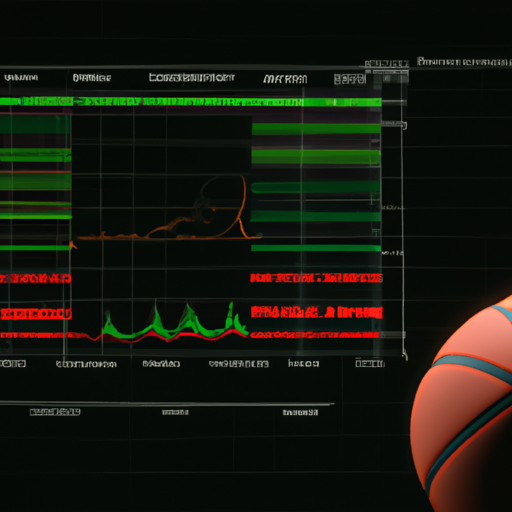The Influence of Data Analytics on Basketball and Betting

The Role of Data Analytics in Improving Basketball Performance
The Role of Data Analytics in Improving Basketball Performance
In recent years, data analytics has become an integral part of the basketball world. Coaches, players, and teams are increasingly relying on data to gain a competitive edge and improve performance on the court. By analyzing vast amounts of data, teams can identify patterns, trends, and insights that were previously hidden. This article explores the role of data analytics in improving basketball performance and how it has revolutionized the game.
One of the key areas where data analytics has made a significant impact is player performance analysis. By collecting and analyzing data on various aspects of a player’s performance, such as shooting accuracy, rebounding ability, and defensive effectiveness, coaches can gain valuable insights into their players’ strengths and weaknesses. This information allows them to tailor their training programs and game strategies to maximize each player’s potential.
Furthermore, data analytics has also revolutionized scouting and recruitment in basketball. In the past, scouts relied on subjective observations and limited statistics to evaluate players. However, with the advent of data analytics, scouts now have access to a wealth of information that can help them make more informed decisions. By analyzing a player’s performance metrics, such as shooting percentages, assist-to-turnover ratios, and defensive ratings, scouts can identify players who possess the skills and attributes that align with their team’s needs.
Data analytics has also had a profound impact on game strategy and decision-making. Coaches now have access to real-time data during games, allowing them to make more informed decisions on substitutions, offensive plays, and defensive strategies. By analyzing data on player performance, team performance, and opponent tendencies, coaches can make strategic adjustments on the fly, increasing their team’s chances of success.
Another area where data analytics has proven invaluable is injury prevention and player health management. By analyzing data on player workload, fatigue levels, and injury history, teams can identify potential risks and take proactive measures to prevent injuries. This information allows coaches to manage player minutes, design appropriate training programs, and make informed decisions on player rest and recovery. Ultimately, this can help teams keep their players healthy and maximize their performance throughout the season.
Data analytics has also had a significant impact on fan engagement and the overall fan experience. With the rise of fantasy basketball and sports betting, fans are increasingly interested in analyzing data to make informed predictions and decisions. By providing fans with access to comprehensive statistics, advanced analytics, and real-time data, teams and leagues can enhance the fan experience and increase fan engagement. This has led to a surge in popularity for fantasy basketball leagues and sports betting, as fans can now use data analytics to compete against each other and make more accurate predictions.
In conclusion, data analytics has revolutionized the basketball world, from player performance analysis to game strategy and fan engagement. By leveraging the power of data, teams and coaches can gain valuable insights that can help them improve performance on the court. Furthermore, data analytics has also transformed the way fans engage with the game, providing them with access to comprehensive statistics and real-time data. As technology continues to advance, the role of data analytics in basketball will only continue to grow, shaping the future of the game.
How Data Analytics is Revolutionizing Basketball Betting Strategies

The world of basketball has always been driven by statistics and data. Coaches and players have long relied on numbers to analyze their performance and make strategic decisions. However, with the advent of data analytics, the game has taken on a whole new level of sophistication. Not only are teams using analytics to gain a competitive edge on the court, but bettors are also using these tools to inform their betting strategies.
Data analytics in basketball involves the collection and analysis of vast amounts of data, including player performance statistics, team statistics, and even data from wearable devices. This data is then used to identify patterns, trends, and insights that can help teams and bettors make more informed decisions.
One of the most significant ways that data analytics is revolutionizing basketball betting strategies is through the use of predictive modeling. By analyzing historical data, statisticians and data scientists can develop models that predict the outcome of future games. These models take into account a wide range of factors, such as player performance, team chemistry, and even external factors like injuries or weather conditions.
These predictive models are incredibly valuable for bettors, as they can help them identify favorable betting opportunities. For example, if a model predicts that a team has a high probability of winning a game, a bettor can place a wager on that team with confidence. Conversely, if a model predicts a low probability of success, a bettor may choose to avoid betting on that game altogether.
Another way that data analytics is influencing basketball betting strategies is through the identification of key performance indicators (KPIs). KPIs are specific metrics that are used to measure the success or failure of a team or player. By analyzing historical data, statisticians can identify which KPIs are most strongly correlated with winning games.
For example, a team’s shooting percentage, rebounding rate, and turnover rate may be identified as key performance indicators. By tracking these metrics over time, bettors can gain insights into a team’s strengths and weaknesses and make more informed betting decisions. If a team has a high shooting percentage and a low turnover rate, for example, a bettor may choose to place a wager on that team.
In addition to predictive modeling and KPIs, data analytics is also being used to inform in-game betting strategies. With the rise of real-time data collection and analysis, bettors can now make more informed decisions during a game. For example, if a team’s star player is injured during a game, bettors can quickly adjust their bets to reflect this new information.
Overall, data analytics is revolutionizing basketball betting strategies. By analyzing vast amounts of data, statisticians and data scientists can develop predictive models, identify key performance indicators, and inform in-game betting decisions. This has led to a more sophisticated and informed approach to basketball betting, giving bettors a greater chance of success. As the field of data analytics continues to evolve, it will be fascinating to see how it further shapes the world of basketball and betting.
The Impact of Data Analytics on Player Evaluation and Drafting in Basketball
The world of basketball has undergone a significant transformation in recent years, thanks to the advent of data analytics. This powerful tool has revolutionized the way teams evaluate players and make decisions during the drafting process. By analyzing vast amounts of data, teams can now gain valuable insights into a player’s performance, potential, and overall value to the team.
Data analytics has become an integral part of player evaluation in basketball. In the past, scouts relied heavily on subjective observations and gut feelings when assessing a player’s skills and abilities. However, with the introduction of data analytics, teams now have access to a wealth of objective information that can help them make more informed decisions.
One of the key areas where data analytics has had a significant impact is in the evaluation of player performance. By analyzing statistics such as shooting percentages, rebounding rates, and defensive efficiency, teams can gain a deeper understanding of a player’s strengths and weaknesses. This allows them to identify players who can contribute in specific areas and fill gaps in their roster.
Furthermore, data analytics has also revolutionized the way teams evaluate a player’s potential. By analyzing historical data and comparing it to current performance, teams can identify trends and patterns that may indicate future success. For example, if a player’s shooting percentage has steadily improved over the course of several seasons, it may suggest that they have the potential to become a more consistent and reliable scorer.
In addition to evaluating individual players, data analytics has also had a significant impact on the drafting process. Teams can now use data to identify players who may be undervalued or overlooked by other teams. By analyzing a player’s college statistics, physical attributes, and performance in specific game situations, teams can make more informed decisions during the draft.
Data analytics has also allowed teams to identify players who may be a good fit for their specific system or style of play. By analyzing data on a team’s offensive and defensive strategies, as well as the performance of individual players within those systems, teams can identify players who have the skills and attributes necessary to thrive in their system.
Furthermore, data analytics has also had a significant impact on the way teams manage their salary cap and make financial decisions. By analyzing data on player salaries, performance, and contributions to the team, teams can make more informed decisions about contract negotiations and free agency signings. This allows teams to allocate their resources more effectively and build a roster that maximizes their chances of success.
In conclusion, data analytics has had a profound impact on player evaluation and drafting in basketball. By analyzing vast amounts of data, teams can gain valuable insights into a player’s performance, potential, and overall value to the team. This has revolutionized the way teams evaluate players and make decisions during the drafting process. Furthermore, data analytics has also allowed teams to identify players who may be undervalued or overlooked by other teams, as well as players who may be a good fit for their specific system or style of play. Overall, data analytics has become an essential tool in the world of basketball, enabling teams to make more informed decisions and maximize their chances of success.

